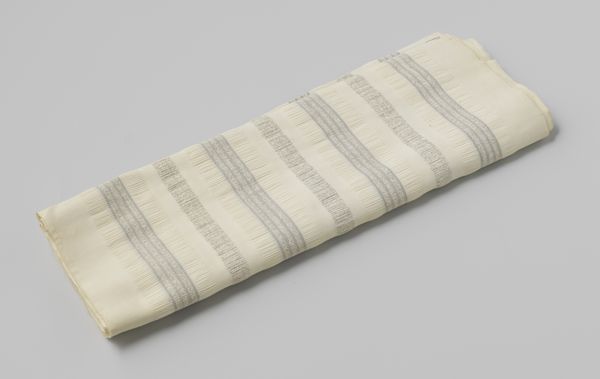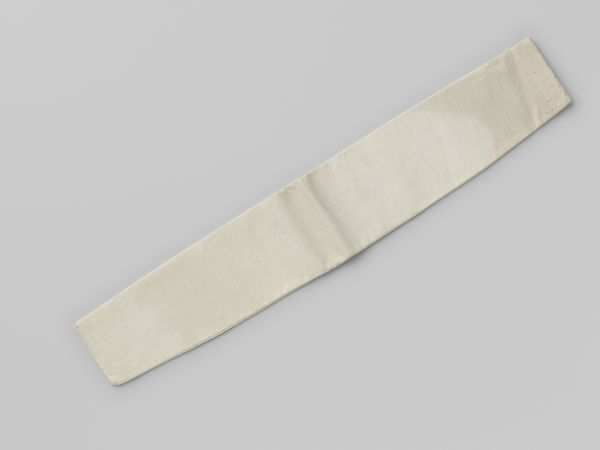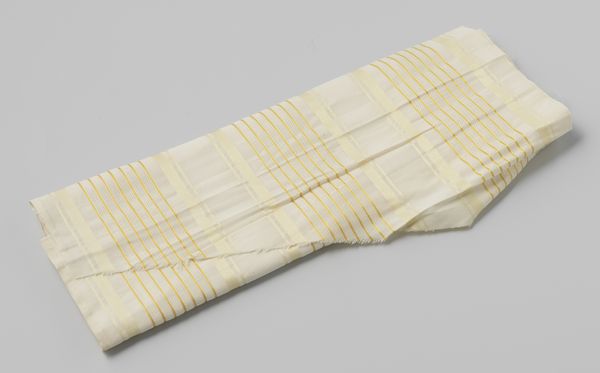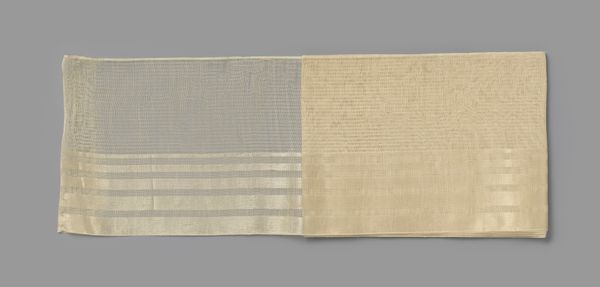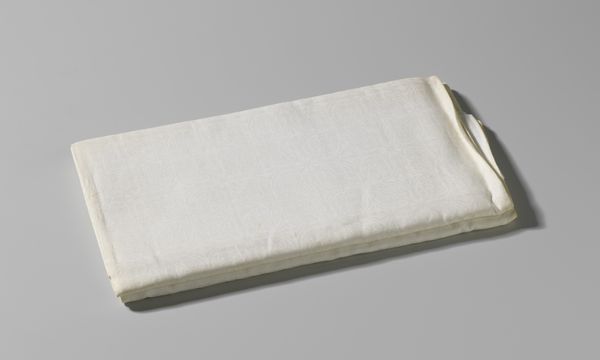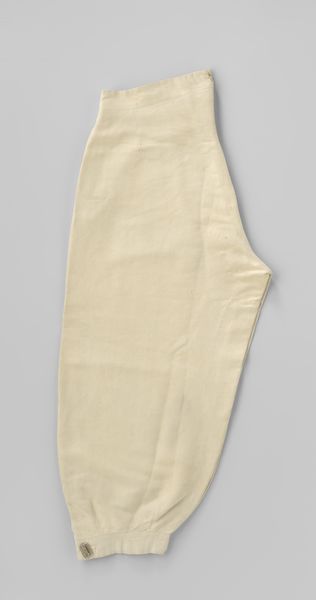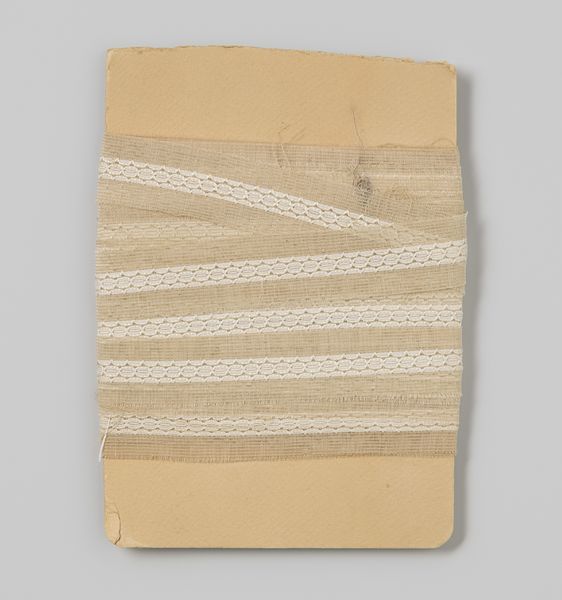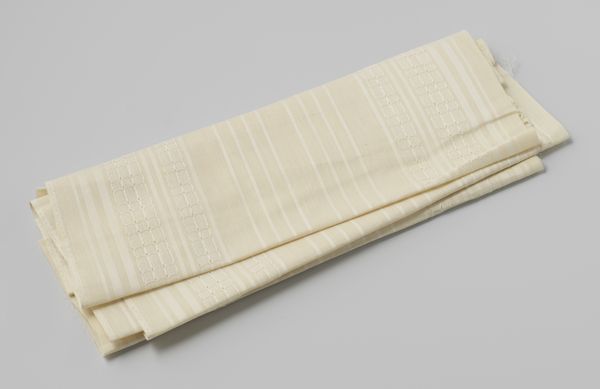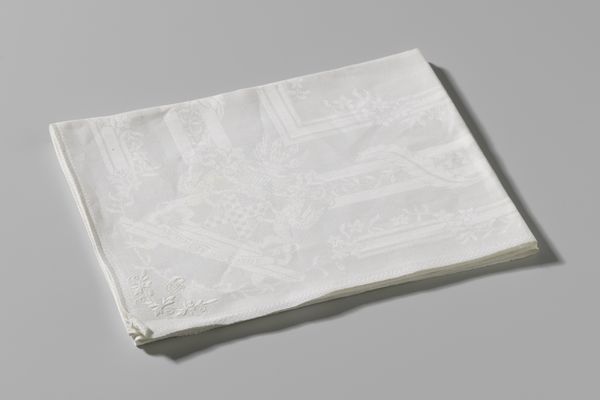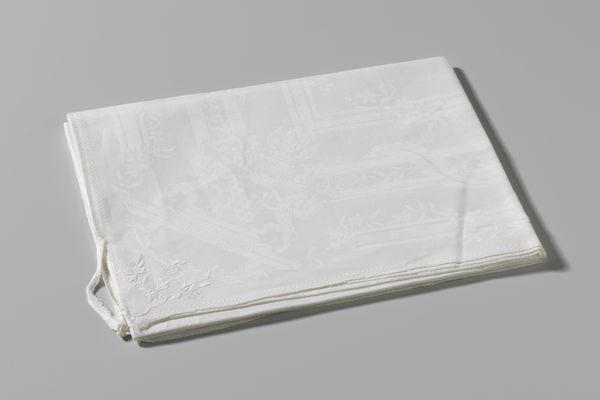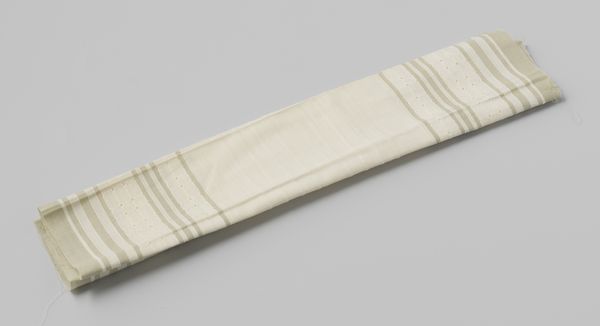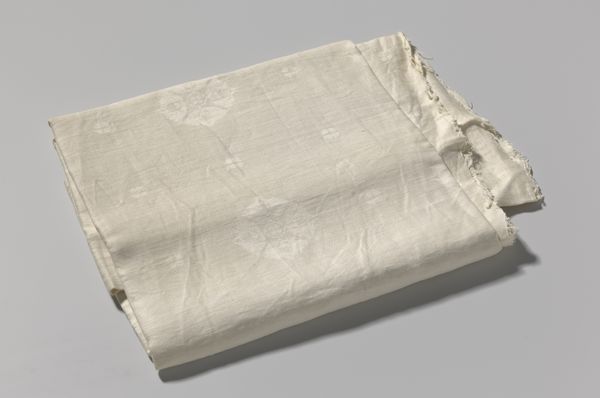
Parasolsector van wit katoen met crêpe strepen en gladde satijnen strepen in verschillende kleuren c. 1910 - 1940
0:00
0:00
gustavschnitzler
Rijksmuseum
silk, textile
#
silk
#
textile
#
line
#
decorative-art
#
clothing design
Dimensions: length 44 cm, width 37 cm
Copyright: Rijks Museum: Open Domain
Curator: Here at the Rijksmuseum, we have this rather wonderful parasol section crafted sometime between 1910 and 1940. It's made from white cotton, featuring crepe stripes alongside those smoother satin ones in subtly shifting colors. What's your first impression? Editor: Austere, almost shockingly minimal for a parasol! It's a simple triangle of material, with the stripes being the dominant visual feature. Not at all what I expected for something meant to be shielding delicate skin from the sun. Curator: Yes, you’re right. What is particularly interesting here, for me, is thinking about this piece as a textile remnant; an object that is clearly no longer an “umbrella,” per se, but speaks of it: the way the fabrics differ, their qualities hinting at its purpose. I feel a strange melancholy—what sunlight did it once filter? Editor: And thinking about the social and economic implications... white cotton wasn’t necessarily cheap back then, so there's already a suggestion of privilege attached. And consider the labour involved in creating those delicate crepe and satin stripes. Were these hand-loomed? It speaks to the hidden efforts of female textile workers to provide luxurious goods. Curator: It’s fascinating how such an ostensibly simple object, like a segment of a parasol, can spark so much speculation, even a little reverie! What did it feel like to carry such a fashionable item during those years? To me, there’s a touch of nostalgia woven into the fibers, an echo of a vanished era, maybe even a hint of romantic rendezvous beneath sun-dappled trees. Editor: Well, for me, it also points to questions of accessibility and class. While one woman shaded herself from the sun, many more toiled under it to make these textiles exist. This simple triangle becomes quite complex, quite loaded really. Curator: I can agree on that. Looking closely certainly reveals how this fragment—from a functional and beautiful object—also exposes stories of aspiration, industry, and even a certain ephemeral quality in the material world. Editor: Absolutely. Material fragments like this aren't just pretty, they carry the weight of untold stories and the evidence of social power, demanding to be examined beyond their surface allure.
Comments
No comments
Be the first to comment and join the conversation on the ultimate creative platform.
